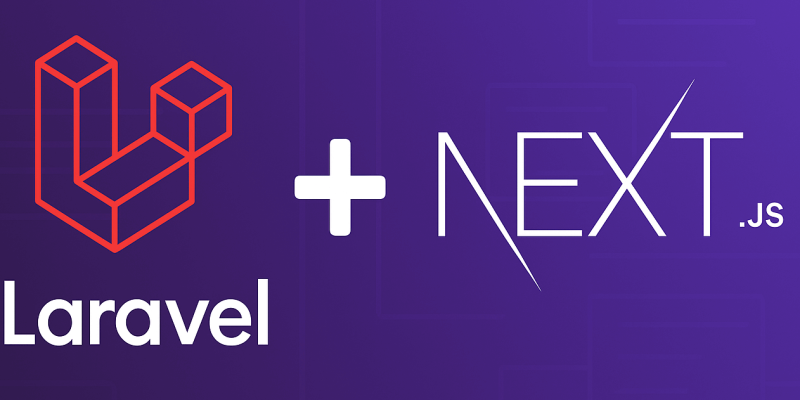If you’ve been exploring ways to build a modern website or app, you’ve probably come across two names quite often: Laravel and Next.js.
Laravel is a popular backend framework, while Next.js is a frontend powerhouse. On their own, they’re great. But when you bring them together, you get a combination that’s secure, scalable, and lightning-fast exactly what today’s businesses need.
Let’s break down why this duo works so well and how you can benefit from it.

Laravel: The Reliable Backend
Think of Laravel as the engine under the hood. It’s not flashy on the outside, but it keeps everything running smoothly.
It takes care of authentication, databases, and security so you don’t have to start from scratch.
The syntax is clean and developer-friendly, which means fewer bugs and faster development.
It’s battle-tested, so whether you’re a startup or an enterprise, Laravel can handle your workload.
In short, Laravel makes sure your app has a strong and secure backbone.
Next.js: The Engaging Frontend
Always ready to push the boundaries, especially when it comes to our own platform, Our analytical eye to create a site that was visually engaging and also optimised for maximum performance. It also perfectly reflects the journey to help it tell a story to increase its understanding and drive action. To create a site that was visually engaging for maximum performance.
Why Put Them Together?
Here’s where the magic happens. When Laravel handles the backend and Next.js takes care of the frontend, you get the best of both worlds.
Your app is secure and stable on the backend.
It’s fast and SEO-friendly on the frontend.
The separation makes it easier to scale, maintain, and even upgrade in the future.
This setup is especially great for:
E-commerce stores → Fast, secure, and optimized for conversions.
SaaS apps → Scalable platforms with smooth dashboards.
Content-heavy websites → Blogs, magazines, or news portals that need speed and SEO.
Best Practices When Using Laravel + Next.js
If you’re thinking of building with this stack, here are a few tips:
Use Laravel mainly as an API backend and let Next.js handle the UI.
Add authentication tools like Laravel Sanctum or Passport for secure logins.
Keep APIs fast by using caching tools like Redis.
Don’t skip on deployment strategies — use platforms like Vercel for Next.js and cloud hosting for Laravel.
Final Thoughts
Combining Laravel and Next.js is like pairing a solid foundation with a beautiful design. You get reliability, performance, and a great user experience all rolled into one.
At Skylooper, we love working with this stack because it allows us to build websites and apps that not only look good but also perform at scale.
Planning a new project? Let’s talk — we’d be happy to help you build it with Laravel and Next.js.






